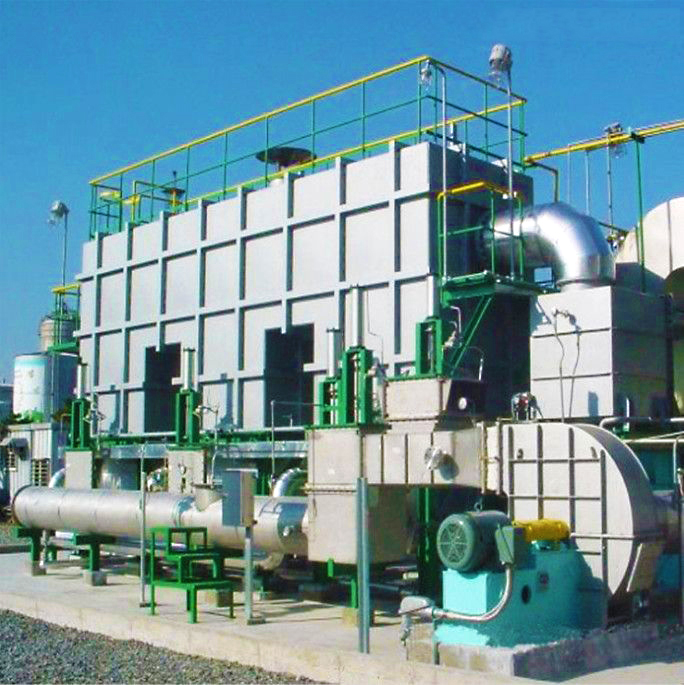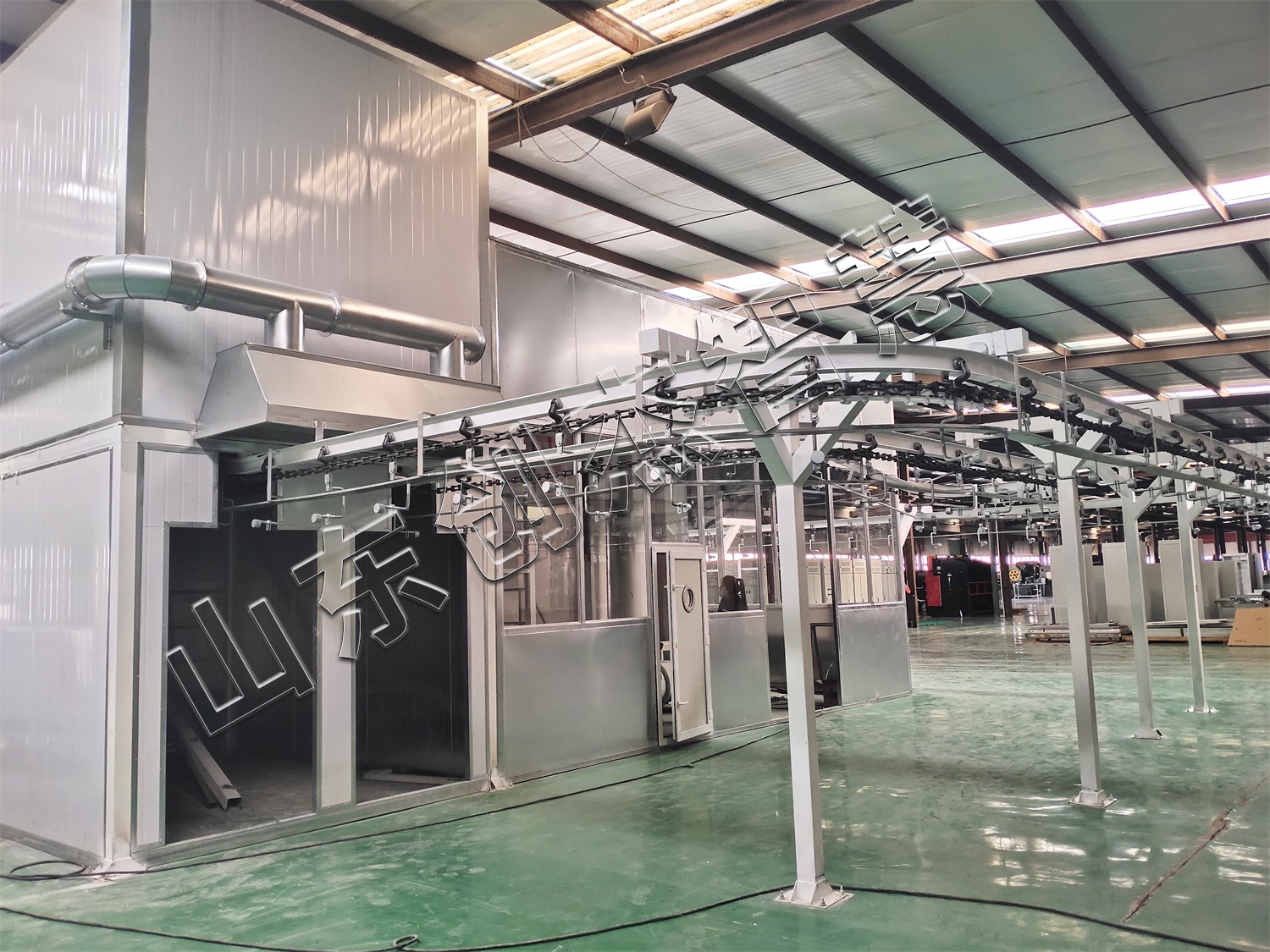VOCs末端治理技術(shù)如何選擇?
來源:http://m.hbrqhj.com/ 發(fā)布時間:2023-10-18
一、針對低濃度大風(fēng)量、無回收價值的VOCs廢氣技術(shù)
1、 VOCs waste gas technology for low concentration, high air volume, and no recycling value
1.活性炭吸附技術(shù)
1. Activated carbon adsorption technology
處理原理:利用活性炭多孔結(jié)構(gòu),對污染物(VOCs)進行吸附,從而達到去除的目的。
Treatment principle: Utilize the porous structure of activated carbon to adsorb pollutants (VOCs), thereby achieving the purpose of removal.
適用范圍:低濃度有機廢氣的凈化。
Scope of application: Purification of low concentration organic waste gas.
不適用范圍:高濃度、高溫的有機廢氣。
Not applicable to high concentration and high temperature organic waste gases.
因為受吸附容量的限制,吸附材料需定期更換 、后期運行費用昂貴,且廢活性炭屬于危廢。
Due to the limitation of adsorption capacity, the adsorption material needs to be replaced regularly, and the later operation cost is expensive, and waste activated carbon belongs to hazardous waste.


2.活性炭吸附+催化燃燒技術(shù)
2. Activated carbon adsorption+catalytic combustion technology
處理原理:含VOCs廢氣首先通過活性炭吸附、濃縮,凈化后的廢氣通過煙囪排放,當(dāng)活性炭接近吸附飽和時,對吸附飽和的活性炭模塊加熱脫附,加熱脫附后的高濃度有機廢氣經(jīng)換熱器預(yù)熱進入催化氧化爐進行分解;在催化氧化爐內(nèi)被加熱到300~400℃的有機廢氣(VOCs)在貴金屬催化劑的作用下發(fā)生無焰燃燒,VOCs被氧化分解成二氧化碳和水,經(jīng)煙囪排放到空氣中。
Treatment principle: The waste gas containing VOCs is first adsorbed and concentrated by activated carbon, and the purified waste gas is discharged through the chimney. When the activated carbon is close to adsorption saturation, the activated carbon module with adsorption saturation is heated and desorbed. The high concentration organic waste gas after heating and desorbing is preheated by a heat exchanger and enters the catalytic oxidation furnace for decomposition; Organic waste gases (VOCs) heated to 300-400 ℃ in a catalytic oxidation furnace undergo flameless combustion under the action of precious metal catalysts. VOCs are oxidized and decomposed into carbon dioxide and water, which are discharged into the air through chimneys.
適用范圍:適用于大風(fēng)量低濃度有機廢氣的凈化,但活性炭和催化劑需定期更換。
Scope of application: Suitable for the purification of high air volume and low concentration organic waste gas, but the activated carbon and catalyst need to be replaced regularly.
不適用范圍:不適用于處理含硫、鹵素、重金屬、油霧、以及高沸點、易聚合化合物、含顆粒物狀的廢氣處理。
Not applicable: Not applicable to the treatment of sulfur, halogens, heavy metals, oil mist, as well as high boiling point, easily polymerizable compounds, and waste gas containing particulate matter.
3.沸石轉(zhuǎn)輪吸附+(蓄熱式)催化燃燒技術(shù)
3. Zeolite wheel adsorption+(regenerative) catalytic combustion technology
處理原理:含VOCs廢氣進入轉(zhuǎn)輪,沸石吸附濃縮其中VOCs成分,潔凈氣體達標(biāo)排放。已吸附VOCs的沸石模塊經(jīng)高溫脫附,脫附后的高濃度有機廢氣經(jīng)換熱器預(yù)熱進入催化氧化爐進行分解;在催化氧化爐內(nèi)被加熱到300~400℃的有機廢氣(VOCs)在貴金屬催化劑的作用下發(fā)生無焰燃燒,VOCs被氧化分解成CO?和H?O經(jīng)煙囪排放到空氣中,脫附后的沸石模塊恢復(fù)吸附能力并轉(zhuǎn)至吸附區(qū)。
Treatment principle: Waste gas containing VOCs enters the runner, and zeolite adsorbs and concentrates the VOCs components, resulting in clean gas emissions that meet standards. The zeolite module that has adsorbed VOCs undergoes high-temperature desorption, and the high concentration organic waste gas after desorption is preheated by a heat exchanger and enters the catalytic oxidation furnace for decomposition; Organic waste gases (VOCs) heated to 300-400 ℃ in a catalytic oxidation furnace undergo flameless combustion under the action of precious metal catalysts, and VOCs are oxidized and decomposed into CO? And H? O is discharged into the air through the chimney, and the adsorbed zeolite module recovers its adsorption capacity and transfers to the adsorption zone.
適用范圍:適用于大風(fēng)量低濃度廢氣,去除效率較高,處理含高沸點或易聚合化合物時,轉(zhuǎn)輪需定期處理和維護。
Scope of application: Suitable for high air volume and low concentration exhaust gas, with high removal efficiency. When dealing with compounds with high boiling points or easy polymerization, the runner needs to be regularly treated and maintained.
不適用范圍:不適用于低沸點不易吸附、高沸點不易脫附和酸堿性有機廢氣的凈化。
Not applicable: Not applicable to the purification of low boiling point, high boiling point, and acid-base organic waste gases that are not easily adsorbed or desorbed.
















 魯公網(wǎng)安備 37142502000144號
魯公網(wǎng)安備 37142502000144號